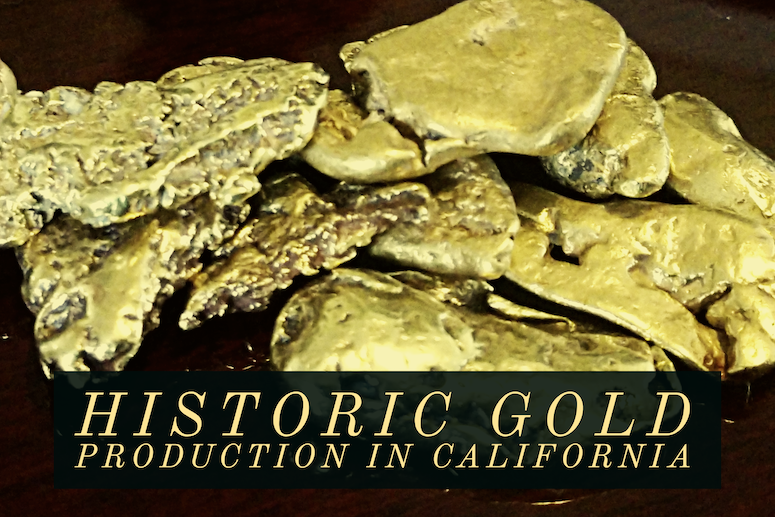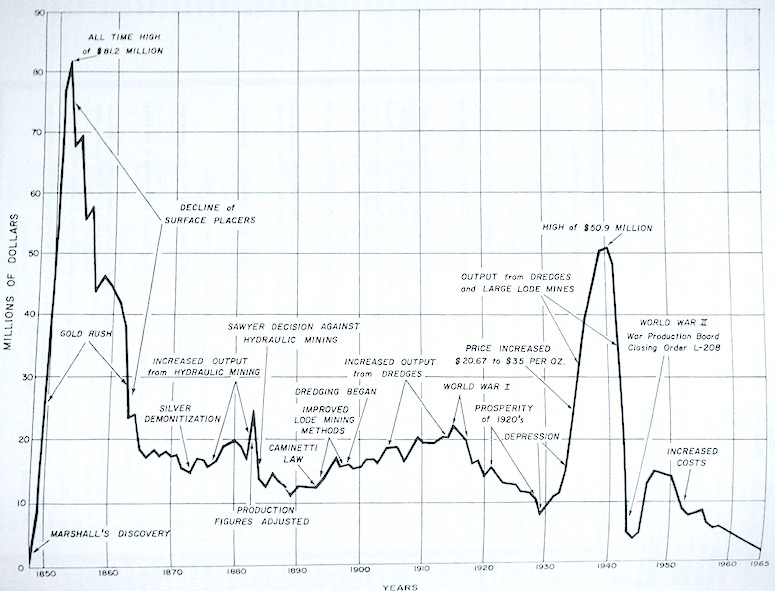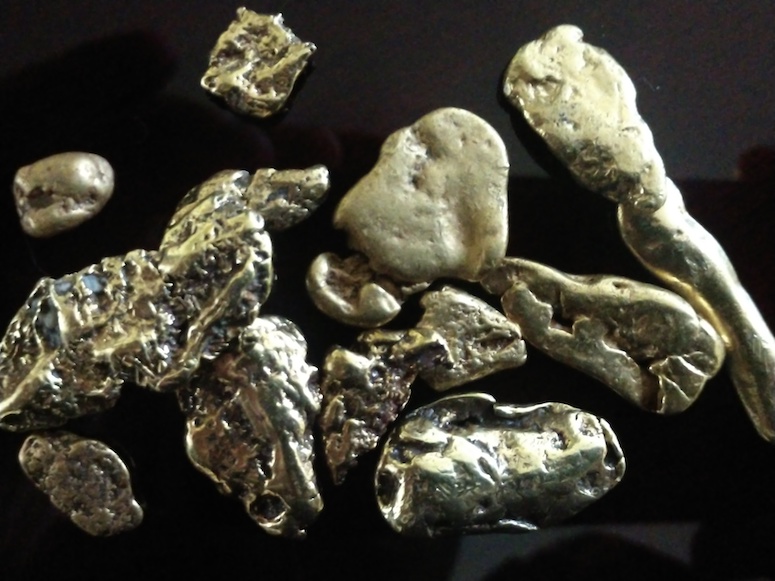
1775-1780
Gold is discovered in the Potholes mining district, Imperial County, CA. Additional gold deposits are discovered in the Cargo Muchacho and Picacho mining districts.
1828-1842
Additional gold sources are found in Southern California in San Diego and Los Angeles County.
1848
First gold nugget is found at Sutter’s Mill on the American River.
1849-1859
This decade was the height of California Gold Rush. The richest placers were being mined from the creeks and rivers of the Sierra Nevada Mountains. Additional gold sources were found in Siskiyou, Trinity and Shasta Counties. These 10 years represent the peak of gold production in California history.

1859
As placer deposits were mostly depleted by this point, the Comstock Lode in Nevada caused an exodus of miners from the California goldfields to the Nevada mines.
1864
Hydraulic mining begins to ramp up. For the next few decades, most placer gold production comes from the large hydraulic operations throughout the state.

1876
Gold strike at Bodie, Mono County, California.
1880
Hydraulic mining reaches peak production.
1884
Excess erosion and flooding results in the Sawyer Decision, prohibiting the discharge of debris into the San Joaquin River system. Although some workarounds exist, it effectively ended the major hydraulic mining in California.
1890
Improvements in lode mining and low-grade ore processing techniques allows for reworking of old tailing and profitable mining endeavors of lower grade ores, causing increased gold production.
1898-1915
The first bucket-dredging operation set up on the Feather River at Oroville. Additional dredging operations start all throughout the gold-bearing rivers of Northern California. Gold production increases substantially up through the beginning of World War 1.

The Gold Dredge Fields of Oroville, California
1915-1929
Gold production drops precipitously following World War 1 until the beginning of the Great Depression.
1930-1942
A renewed interest in gold mining begins with the Great Depression. Many mines that had set idle for decades are brought back into production. Individual miners with few job opportunities head back into the hills to dig for gold. Many dredges restart operations, as well as many large quartz mines.
1942-1979
World War 2 effectively ended the gold mining in California. The War Productions Act ceased the mining of all non-essential minerals. Most gold produced during this period came as a by-product of copper mining.
Most of the mines shut down during the war would never reopen again. Restarting a mine is no simple task, and economic factors, low gold prices, and better opportunities lead to limited interest in gold mining. Bucket dredging ends.
1980
A renewed interest in gold mining caused due to massive spike in the gold price, topping out at over $2200 per ounce in February of 1980. Small-scale miners took to the rivers and reworked the historic placer districts. Suction dredging produced significant gold for hard working miners. Unfortunately, the gold price takes a turn, and for the next 20 years the price of gold drops.
Mining in California Today
Regulatory burdens have nearly completely halted the large-scale mining efforts in the state of California. Only a tiny fraction of the mines that started in the 1800s are still in operations today. Small-scale miners are also limited, with severe restrictions on suction dredging and other common prospecting methods. While small-scale mining still occurs to this day, the regulatory burdens largely prevent any significant gold production from taking place in California.
The Alleghany Mining District, California
17 of California’s Richest Gold Mining Locations
